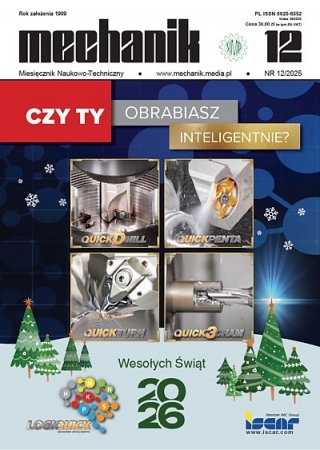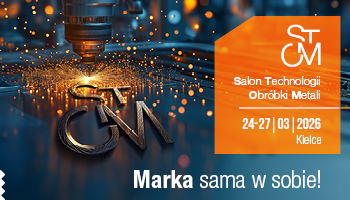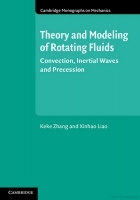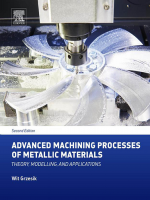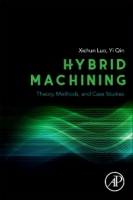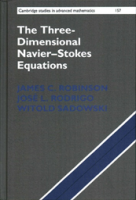Research on welding processes of multi-node aircraft frames and methods for their control
Badania procesów spawania wielowęzłowych kratownic lotniczych oraz sposoby ich kontroli *
Author: Paweł Bałon, Edward Rejman, Bartłomiej Kiełbasa, Robert Smusz, Grzegorz Szeliga
Mechanik nr 05/06/2024 - Obróbka - inne rodzaje
ABSTRACT: The designed aircraft frame structure uses a connection of tubular rods by welding. To apply automatic welding of trusses, the authors designed and assembled the welding station adapted to the dimensions and truss shape. You should also choose the appropriate welding power source and an interface for communication with a robot or automaton. Automatic welding of trusses also requires programming of the robot’s movement trajectory, especially the welding head, and a particularly accurate selection of welding process parameters. The most important issue of automation of the welding process is the nodes of the aircraft engine frame, whose limited access requires manual welding. Therefore, the future of welding lattice aircraft structures requires a hybrid approach to the process, i.e. some of the node connections can be easily automated, and some will remain in classical manufacturing methods. In addition, the topic of checking such connections using NDT methods was discussed. In addition, the issue of checking this type of connection using methods approved for aviation, i.e. NDT, was discussed.
KEYWORDS: welding, frame welding, aircraft welded structures, automatic welding, NDT testing
STRESZCZENIE: W projektowanej konstrukcji ramy samolotu zastosowano połączenie prętów rurowych poprzez spawanie. Aby zastosować spawanie automatyczne kratownic, autorzy zaprojektowali i zmontowali stanowisko spawalnicze dostosowane do wymiarów i kształtu kratownicy. Należy również dobrać odpowiednie źródło zasilania spawania i interfejs do komunikacji z robotem lub automatem. Spawanie automatyczne kratownic wymaga programowania trajektorii ruchu robota, zwłaszcza głowicy spawającej, oraz bardzo dokładnego doboru parametrów procesu. Najistotniejszą kwestią automatyzacji procesu jest spawanie węzłów ramy silnika samolotu, które ze względu na ograniczony dostęp wymagają spawania ręcznego. Zatem przyszłość spawania kratowych konstrukcji lotniczych wymaga hybrydowego podejścia do procesu – czyli częściowo proces łączenia węzłów można będzie prosto zautomatyzować, a częściowo trzeba będzie pozostać przy klasycznych metodach wytwarzania. Ponadto podjęto tematykę kontroli tego typu połączeń metodami dopuszczonymi dla lotnictwa, tj. NDT.
SŁOWA KLUCZOWE: spawanie, spawanie ram, konstrukcje spawane samolotów, spawanie automatyczne, badania NDT
BIBLIOGRAFIA / BIBLIOGRAPHY:
[1] Ramesh M.V.L., Srinivasa Rao P., Venkateswara Rao V. “Microstructure and mechanical properties of laser beam welds of 15CDV6 steel”. Defence Science Journal. 65, 4 (2015): 339–342, https://doi.org/10.1016/10.14429/dsj.65.8749.
[2] Naveen Kumar P., Bhaskar Y., Mastanaiah P., Murthy C.V.S. “Study on dissimilar metals welding of 15CDV6 and SAE 4130 steels by inter pulse gas tungsten arc welding”. Procedia Materials Science. 5 (2014): 2382–2391, https://doi.org/10.1016/j.mspro.2014.07.483.
[3] Liao W., Goel V., Lee K.S. “A Neuro-Expert system for modelling and planning of automated MIG welding”. International Conference on Computerisation of Welding Information. IV (3–6 November 1992), Orlando, Forida.
[4] Matzner D., Drews P. “Smart welder – highly automated robot welding for large workpieces in shipbuilding”. The IIW Annual Assembly. XII Comm. Stockholm (1995).
[5] Mikuła J. “MAT–SPAW – program wspomagający analizę spawalności i opracowanie technologii spawania”. Przegląd Spawalnictwa. 8 (1990).
[6] Bałon P., Cieślik J., Halama Ł., Kiełbasa B., Lach T., Lesiński M., Łajczak D. “A method of manufacturing car mufflers by wrapping sheets, using innovative forming device with the use of servo drive”. Procedia Manufacturing. 50 (2020): 17–21, https://doi.org/10.1016/j.promfg.2020.08.004.
[7] Skrzypek S. J., Przybyłowicz K., „Inżynieria metali i technologie materiałowe”. Warszawa: WNT (2020).
[8] Pilarczyk J. „Metaloznawstwo spawalnicze”. Warszawa: Wydawnictwo Politechniki Warszawskiej, 1977.
[9] Bałon P., Świątoniowski A. „Forming of automotive parts with nuts clinch process in comparison to welding of nuts”. Key Engineering Materials. 611–612 (2014): 1503–1510, https://doi.org/10.4028/www.scientific.net/KEM.611-612.1503.
[10] Brózda J., Pilarczyk J., Zeman M. „Spawalnicze wykresy przemian austenitu CTPe-S”. Katowice: Wydawnictwo Śląsk (1985).
[11] Koszela W., Bałon P., Rejman E., Kiełbasa B., Smusz R., Bembenek M. “The Influence of Structuring Surfaces and Slide Burnishing on Tribological Properties”. Metallofiz, Noveishie Tekhnol. 45, 3 (2023): 403–421, https://doi.org/10.4028/10.15407/mfint.45.03.0403.
[12] Bałon P., Świątoniowski A. “Stamping automotive parts with clinch nut process”. AIP Conference Proceedings. 1567, 1 (2013): 971–974, https://doi.org/10.1063/1.4850132
[13] Prace własne – projekt: POIR.01.01.01-00-0392/21: Prace B+R nad lotniczymi konstrukcjami kratownicowo-ramowymi w Przemyśle 4.0.
[14] Norma: PN-EN 13018 – Badania nieniszczące.
[15] Norma: PN-EN ISO 17637 – Badania wizualne złączy spawanych.
[16] Norma: PN-EN ISO 3059 – Badania penetracyjne i badania magnetyczno-proszkowe.
[17] Norma: PN-EN ISO 9934-1 – Badania magnetyczne proszkowe.
[18] Norma: PN-EN ISO 5817 – Spawanie – Złącza spawane ze stali, niklu, tytanu i ich stopów. Poziomy jakości według niezgodności spawalniczych.
[19] Norma: PN-EN ISO 17635 – Badania nieniszczące spoin – Zasady ogólne dotyczące metali.
DOI: https://doi.org/10.17814/mechanik.2024.5-6.10
* Artykuł recenzowany



